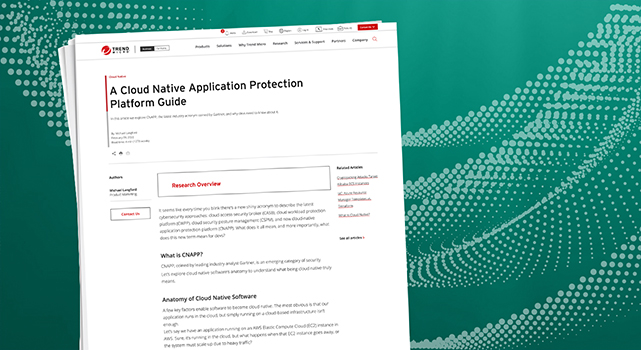- “여러 AI 모델을 로컬에서 테스트 가능”···구글, 오픈소스 앱 ‘AI 엣지 갤러리’ 공개
- Why I recommend this OnePlus phone over the S25 Ultra - especially at this new low price
- I replaced my laptop with Microsoft's 12-inch Surface Pro for weeks - here's my buying advice now
- This palm recognition smart lock doubles as a video doorbell (and has no monthly fees)
- Samsung is giving these Galaxy phones a big One UI upgrade - here's which models qualify
CNAPP Security: Cloud Native Application Protection Platform

According to Gartner, manual integration is the most common method of integrating different security tools to streamline DevOps. By consolidating capabilities, security teams are freed from manual correlation and investigation between several, disparate point products. And comprehensive visibility leads to better identification, assessment, prioritization, and adaptation to risks in cloud native applications. Ok, good for them, you may be thinking, but how does this help me?
DevOps and CNAPP
Think of it this way: the alignment between security and development teams (also known as DevOps) results in more secure apps and less build/deployment headaches. An important element of establishing a strong DevOps culture is using security tools that help security teams see all the bad stuff as quickly as possible, enabling devs to build resilient apps faster.
Ok, so how do you choose the right tool? With DevOps, this isn’t just a single-person decision; security, operations, and development teams need to weigh in on how the product(s) will help everyone do their jobs quickly and effectively to meet the overarching business goals.
Therefore, devs need to be aware of the best security architectures like CNAPP to choose the right products, ensuring apps are secure without slowing down build times.
Why CNAPP?
As the number of cloud app deployments increase, leveraging a security approach tailored to modern needs is critical. Enter CNAPP. It solves cloud app security needs by addressing three main roadblocks:
Roadblock #1: Knowledge gap
Security professionals aren’t developers and developers aren’t security professionals. In a recent Gartner survey, the lack of internal knowledge about security was rated the biggest challenge for securing cloud-native apps in a DevOps pipeline.
This knowledge gap can lead to security teams trying to “cover all their bases” by deploying many different point products to address specific needs. In theory, this man-to-man coverage may seem effective, but in reality, it creates more mental work for already stretched teams; they’re now responsible for stitching together data from separate products.
For devs, this time-consuming manual correlation leads to delays in development workflows. Even worse, security blind spots can lead to undetected risks throughout the lifecycle until it’s too late. Research from NIST shows the later a bug is discovered, the more expensive it is to remediate.
CNAPP act as a super brain. One console with the power to correlate threat data and quickly determine risks across endpoints, containers, serverless functions, etc. This allows devs to build with confidence that their apps are as secure as possible.
Roadblock #2: Time management
Agility is the name of the cloud app game. Security testing needs to be swift and effective, allowing devs to continue on their merry way. Building off roadblock #1, we know that doing things the old-fashioned way by hand isn’t going to cut it.
To get the full benefits of a CNAPP approach, make sure your platform of choice has robust automation capabilities that can automate as many tasks, scans, and checks as possible. When organizations automate as much as possible, not only is detection much quicker, but the number of false-positive alerts are reduced.
Less false positives ensure devs are spending their valuable time investigating and remediating the highest severity and risk vulnerabilities, instead of being sent on a wild goose chase. Now that they’re spending less time on security tasks, they have more time to focus on doing what they do best—build great cloud apps.

